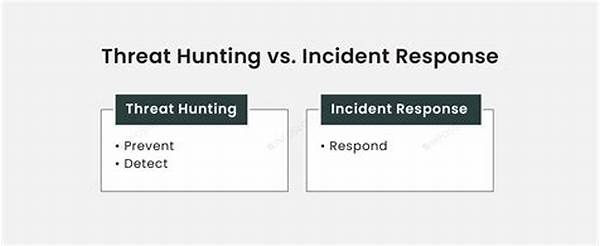Hey there, fellow cyber enthusiasts! So, you’ve heard of threat hunting and incident response but still find these terms a smidge confusing? No worries, you’re in the right place. Today, we’re diving deep into these integral cybersecurity practices. Grab a cup of coffee, and let’s chat about how these strategies keep our digital world secure.
The Basics of Threat Hunting and Incident Response
Imagine you’re the detective of the cyber world; that’s what threat hunting is all about! It’s a proactive measure where experts seek out potential threats before they manifest into full-blown security incidents. It’s not just about sitting back and waiting for something bad to happen; it’s about going out there and searching for anomalies that could mean trouble in the future.
On the flip side, we have incident response. Think of this as a fire department ready to leap into action once an alarm goes off. When an incident—the equivalent of a cyber fire—occurs, the response team steps in to mitigate the damage, analyze what went wrong, and ensure it doesn’t happen again. Together, threat hunting and incident response form a dynamic duo, proactively seeking out and managing threats to keep our data safe and secure.
Why Threat Hunting Matters
Threat hunting isn’t as daunting as it sounds.
It’s like your digital treasure hunt, but instead of gold, we search for security threats.
It strengthens your cybersecurity posture.
Besides, it identifies threats before they become problems.
Uncovering hidden threats is like an adrenaline rush—a real-world puzzle to solve!
The Dynamic Duo: Working Together
When threat hunting and incident response combine, the magic happens. Picture this: threat hunters are the scouts, scouring for potential dangers. Now, if they find something suspicious, incident responders come into play, analyzing and neutralizing the threat. It’s this seamless collaboration that reinforces the cybersecurity walls around any organization.
Proactive threat hunting continuously scans for signs of intrusion, reducing the time window for potential hackers. Meanwhile, incident response swoops in with actionable strategies once a threat is identified, ensuring minimal damage and a well-structured reaction. This chained effort creates a robust firewall against data breaches, keeping digital assets safe.
Skills for Aspiring Cyber Detectives
Looking to dive into the world of threat hunting and incident response? Great choice! First, get cozy with data analysis. It’s all about spotting patterns and anomalies in vast amounts of data. Next, brush up on your cybersecurity knowledge. Understanding how different attacks work can help you sniff out threats more effectively. Finally, never undervalue the power of good communication. Being able to articulate your findings can make all the difference when mobilizing an incident response.
Honing these skills can transform you from a curious novice into a formidable force in the cybersecurity realm. A well-rounded understanding, paired with practical experience, will set you up for success on any threat-hunting expedition or incident response team endeavor.
Tools of the Trade
In this digital battlefield, having the right tools is crucial for effective threat hunting and incident response. Start with SIEM (Security Information and Event Management) systems that aggregate and analyze data from various sources. Then there are EDR (Endpoint Detection and Response) tools, designed to safeguard individual endpoints like computers or smartphones. Don’t forget about threat intelligence platforms that offer real-time data on emerging cyber threats.
These tools, when unified, provide a comprehensive view of your security posture. They empower teams to act swiftly in case of breaches and enhance threat-hunting capabilities by detecting anomalies early on. Equipped with such powerful tools, tackling cyber threats becomes a more manageable task.
A Day in the Life of a Cyber Defender
A typical day in the life of someone working in threat hunting and incident response can be unpredictable yet fulfilling. One moment, you’re sipping on your mid-morning coffee and the next, you’re knee-deep in data analysis, trying to decipher whether a series of login attempts is innocuous or a precursor to something more sinister.
Communication skills come into play when collaborating with your team, ensuring everyone’s on the same page. Factor in some report writing, perhaps a quick meeting on an emerging threat, and you have a day that’s as dynamic as it is challenging. But amidst these tasks, knowing that your work contributes to safeguarding crucial information keeps you motivated and on your toes.
Wrapping It Up
So there you have it—a peek into the world of threat hunting and incident response. These cybersecurity warriors are essential in modern digital defense, continuously searching for threats and formulating strategies to counteract them. Whether you’re considering a career in this field or merely curious about what goes on behind the scenes, understanding these processes is key to appreciating the complexities of cybersecurity.
At the end of the day, threat hunting and incident response are all about keeping our digital playground safe and sound. We owe a lot to these digital detectives, who make sure our data remains secure while we go about our daily lives, mostly oblivious to the potential cyber perils lurking in the shadows.

